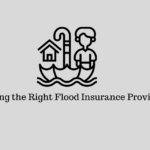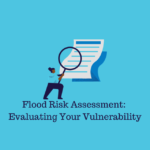In order to optimize revenue and operational efficiency, it is crucial for healthcare practices to aim for a rejected claims rate of 5% or lower. When considering that the average practice experiences a rejected claim rate ranging from 15% to 25%, with a clean claims rate of 75% to 85%, it becomes evident that reducing rejections is of utmost importance. To put it into perspective, out of every 500 claims submitted, around 125 may be rejected for various reasons, resulting in a significant impact on your practice’s revenues.
Even if most denied claims eventually get approved, the time, money, and effort required to rectify these rejections can be burdensome. Taking proactive measures to minimize rejected claims before they are submitted to insurance companies proves to be a more efficient approach.
Understanding the Costs of Rejected Claims
Many billers may write off rejected claims due to the overwhelming volume of rejections and denials. They prioritize focusing on the 75% of claims that are paid. However, it is important to recognize that the cost of the remaining 25% can be more significant than anticipated.
Billing expenses increase, particularly when keeping track of unpaid claims becomes challenging. This delay in net collections further prolongs the revenue cycle, leading to additional time and effort spent on the collection process. Fortunately, there are cost-effective strategies available to minimize rejection rates and enhance revenue collection for your practice.
Strategies for Maximizing Revenue
1. Work on Rejections Promptly: Addressing rejected claims promptly allows you to resolve any issues efficiently, reducing the time and effort needed to recover lost revenue.
2. Identify Recurring Rejections and Make Adjustments: Analyze common patterns or reasons for rejections and implement necessary adjustments to prevent future occurrences. Identifying trends enables proactive measures for improving claim acceptance rates.
3. Thoroughly Review Validation Reports for Rejected Claims: Carefully assess all validation reports for rejected claims to understand the reasons behind the rejections. This information is valuable for identifying any underlying issues that may require attention.
4. Evaluate Software, Personnel, and Practice Procedures: Look into the software used, the capabilities of your staff, and the overall procedures within your practice. Identifying any potential causes of rejections allows for targeted improvements that can contribute to increased efficiency.
By investing effort in understanding why claims are being rejected, you can uncover valuable insights about your practice’s claim handling process and identify areas for improvement. These proactive measures can lead to greater efficiency, correct recurring issues, and highlight patients who need to address outstanding balances before receiving further treatment.
Taking a proactive approach, such as verifying insurance coverage, addressing outstanding patient balances, and updating software and practice procedures, will contribute to a more consistent revenue stream. Implementing effective denial management services can significantly reduce the number of claims that reach the rejection stage, ultimately enhancing the overall efficiency of your medical billing process.
By striving for a low rejected claims rate and implementing effective revenue optimization strategies, your practice can streamline operations, improve financial outcomes, and provide better care to patients.











drugs online
prescription drug price comparison
international pharmacies